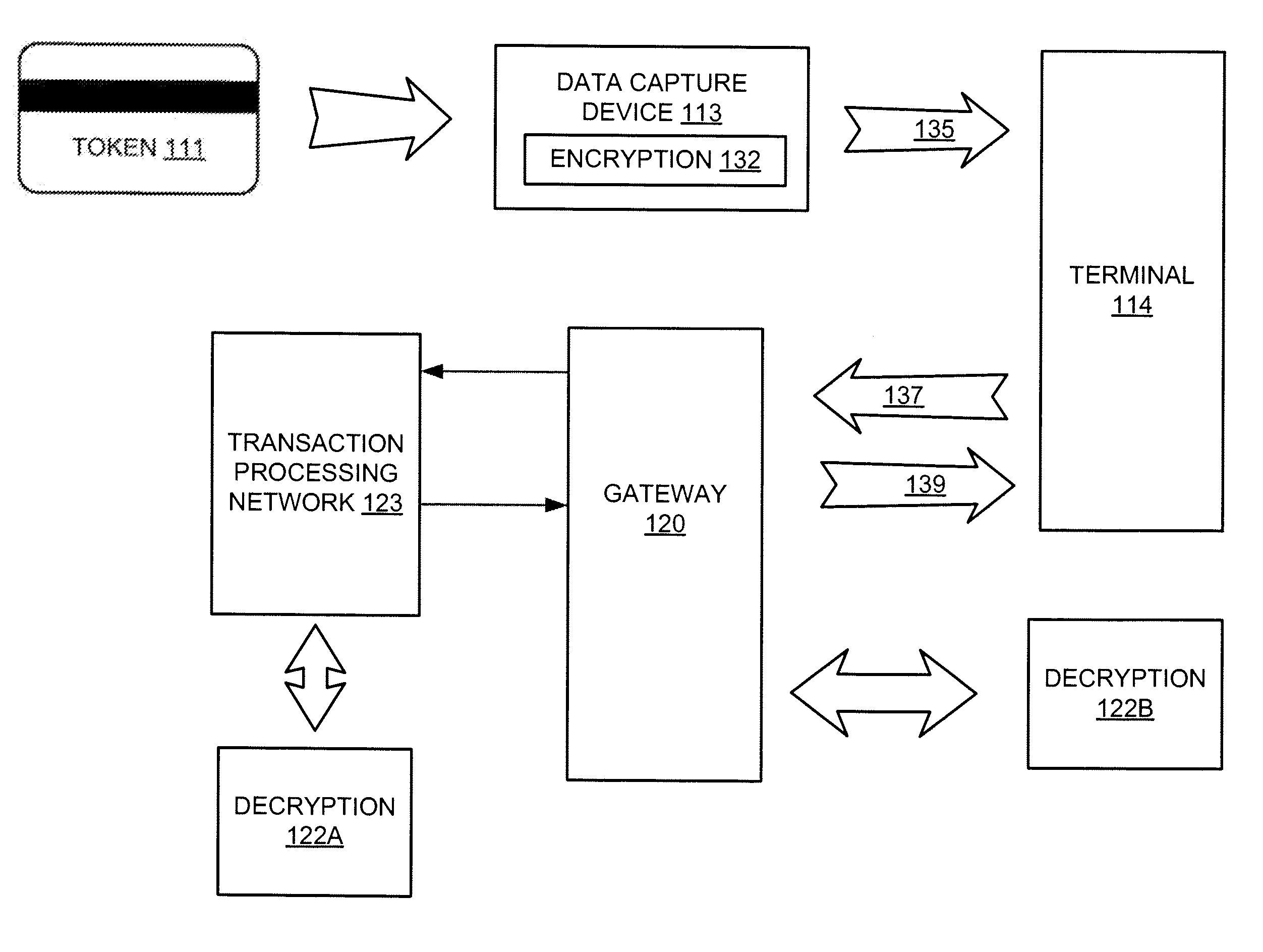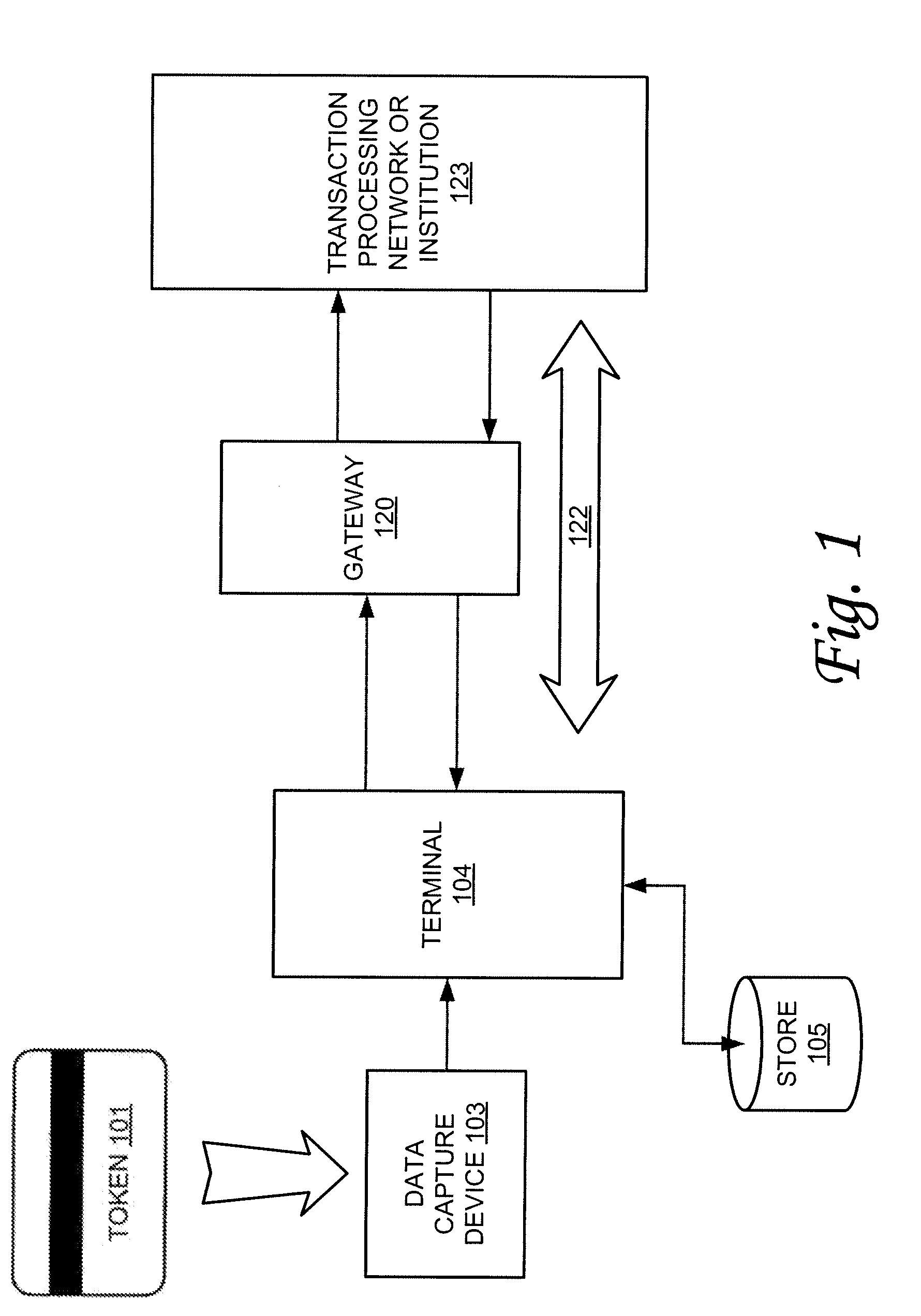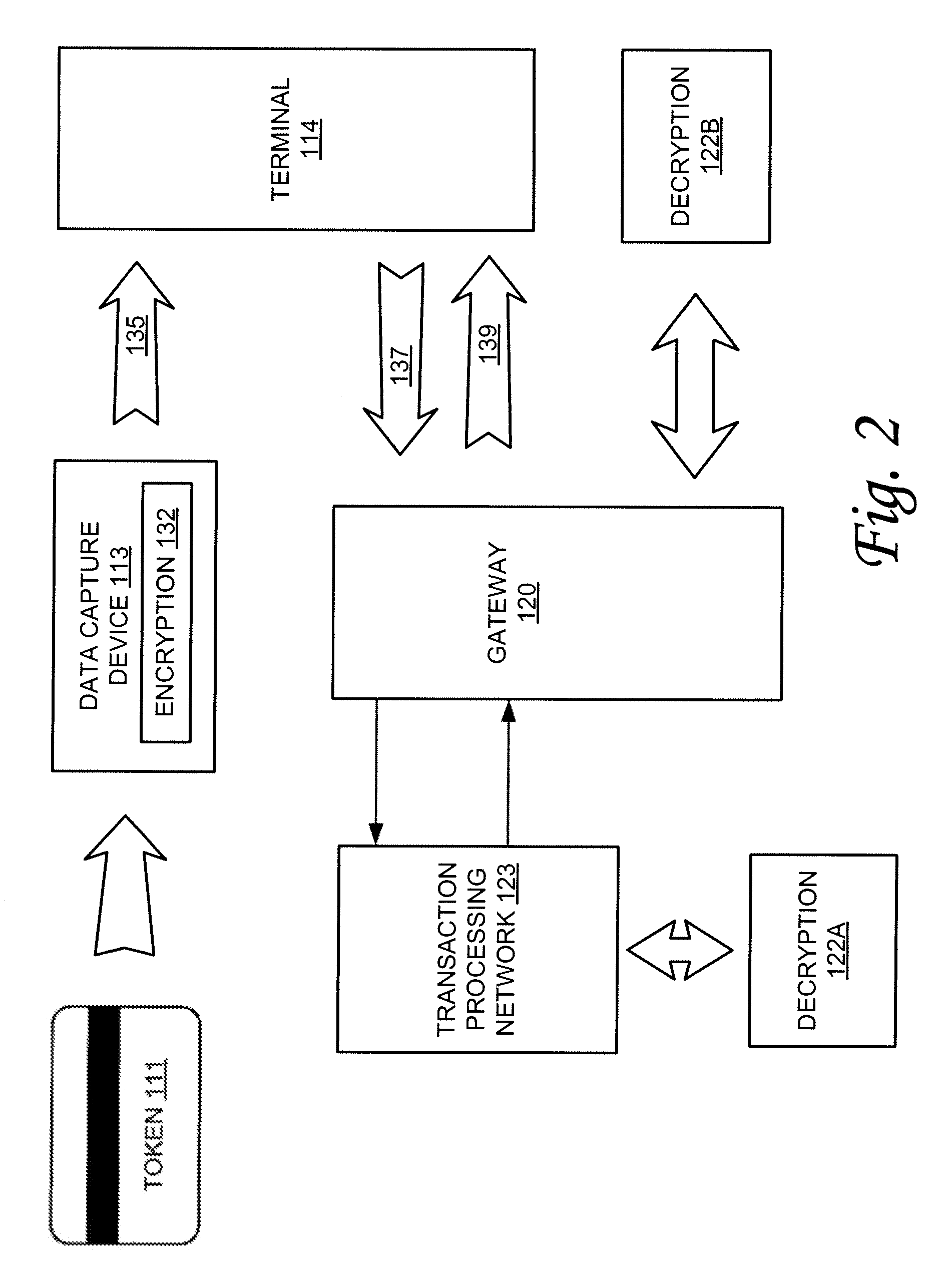[0009]For example, in one application, an
encryption module can be included to encrypt the data that is read from the token. Preferably, in one embodiment, the data is encrypted as soon as it is read from the token to provide an additional measure of security. To further enhance security in one embodiment, the
encryption module, including
encryption algorithms and keys, is encapsulated with the data capture device (which may be included with a terminal) and the encapsulation prevents or deters would be tamperers from
reverse engineering encryption algorithms for obtaining the keys. Security measures can also be provided to destroy, alter, or otherwise render encryption information unusable in the event of attempted tampering.
[0011]The data capture device can be configured to output a secure
data stream that includes encrypted token data. In one embodiment, the data capture device can be configured to
package the encrypted token data in the same form and format as conventional non-encrypting systems such that the transaction
package can be sent to the terminal in a form and format anticipated by the terminal. In this manner, in one embodiment data capture devices can be plug-and-play compatible with terminals or other
transaction processing equipment. Such an embodiment can facilitate upgrades to the transaction-
processing network to include
data security features without requiring extensive retrofits to downstream equipment.
[0013]Another feature that can be provided in accordance with the present invention is a secure transaction module that can be used to, among other functions, decrypt data. For example, in one embodiment, a secure transaction module can be provided at one or more points in the transaction-
processing network to decrypt data that has been encrypted by the data capture device or to decrypt data that is encrypted on a token. Thus, this decryption functionality can be used to obtain clear text token data to facilitate consummation of the transaction. Secure transaction modules can be placed at appropriate points on the network depending on factors such as
network security and desirability of obtaining clear text information at points along the network.
[0018]In one embodiment, the signature information and the token data can be packaged in a format compatible with downstream equipment, and in another embodiment, compatible with conventional equipment to facilitate
plug and play compatibility of the data capture device with conventional equipment. The signature information included with the
transaction data can be used to authenticate the token. In one embodiment, signatures can be encrypted using keys different from the token data to allow
authentication to occur independently of clearing the token data. In another embodiment, the signature can be used as the key to encrypt the token data. In such an embodiment, it is possible to use signatures at the
processing end to decrypt the token data. If a card is not authentic, the encrypted data may not be capable of being decrypted by the set of keys available at the processing
server. Thus, using the signature to encrypt the data can provide another measure of security.
[0021]In accordance with another embodiment, additional measure of security can be provided by encrypting additional information such as, for example, a PIN code or other ancillary information. For example, PIN codes, passwords, signatures, biometric or other information that may be provided to authenticate a user can also be encrypted to provide a measure of security in that information. Thus, in one embodiment, the encryption module can be used to encrypt this ancillary information. A secure transaction module can likewise be used to decrypt the pin or other ancillary information for appropriate
data processing. It is noted that in one conventional application, conventional techniques utilize clear text token data to encrypt the pin in
bank card transactions. However, in one embodiment, encrypted token information rather than clear text token information is used as a key to encrypt the pin data. As such, to provide functionality in a conventional network that is anticipating a pin encrypted with clear text information, a feature can be provided to decrypt the pin using the encrypted token information, decrypt the token information, re-encrypt the pin using the clear text token information and forwarding the token information and pin to the transaction processor. Additionally, the token information can be re-encrypted to ensure
data security.
[0022]In another embodiment of the invention, features and functionality can be provided to perform
batch processing of token transactions. As such, in one embodiment, a secure transaction module can be implemented to include the functionality to process batch transactions from a plurality of sources and for a plurality of
transaction processing entities. In one embodiment, a batch settlement file can be provided to the secure transaction module that includes
data records for each of the transactions to be settled. Some or all of these transactions may include encrypted data such as, for example, data encrypted by the processes described herein. In one embodiment, when the batch settlement file is received, the
data records can be parsed and checked to determine whether any or all of those records are encrypted. Information can be included with the batch settlement file to identify the source of the file, which may be used, in one embodiment, to identify the source of the data which may also identify the appropriate encryption key. The secure transaction module can be configured to obtain the correct key, decrypt encrypted records and return clear text information for settlement processing. Clear text transactions can then be processed for appropriate settlement. In one embodiment, a settlement file may contain transactions for multiple entities and thus may require forwarding the appropriate transaction records to the appropriate settlement entity. In such embodiments, further encryption can be used to provide a measure of security when forwarding the transaction records to the appropriate entities.
 Login to View More
Login to View More  Login to View More
Login to View More 


